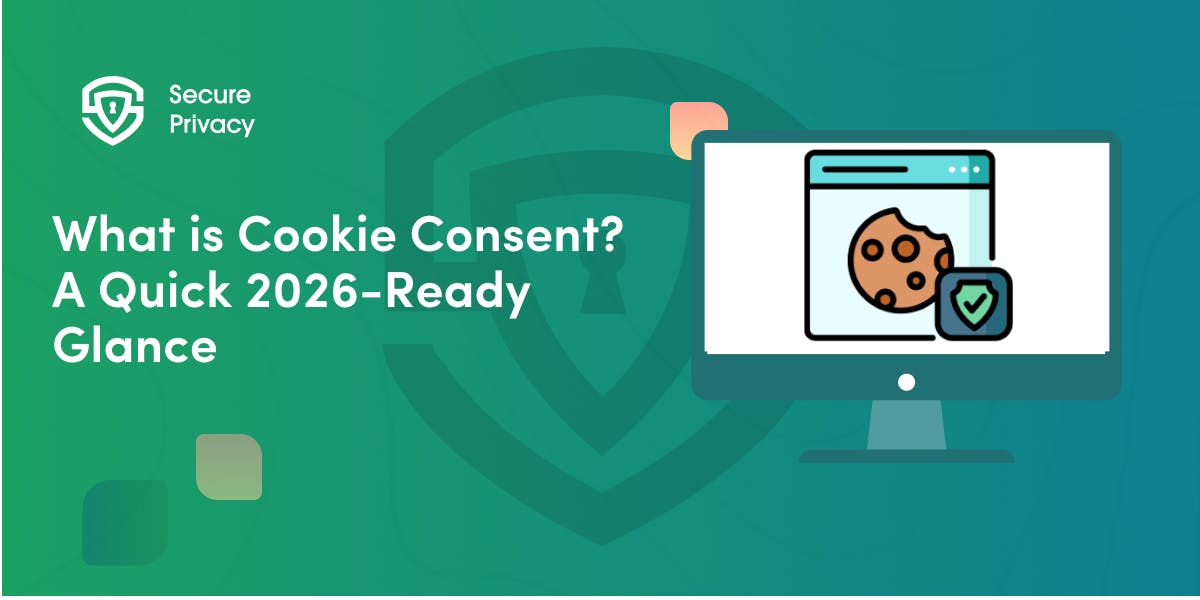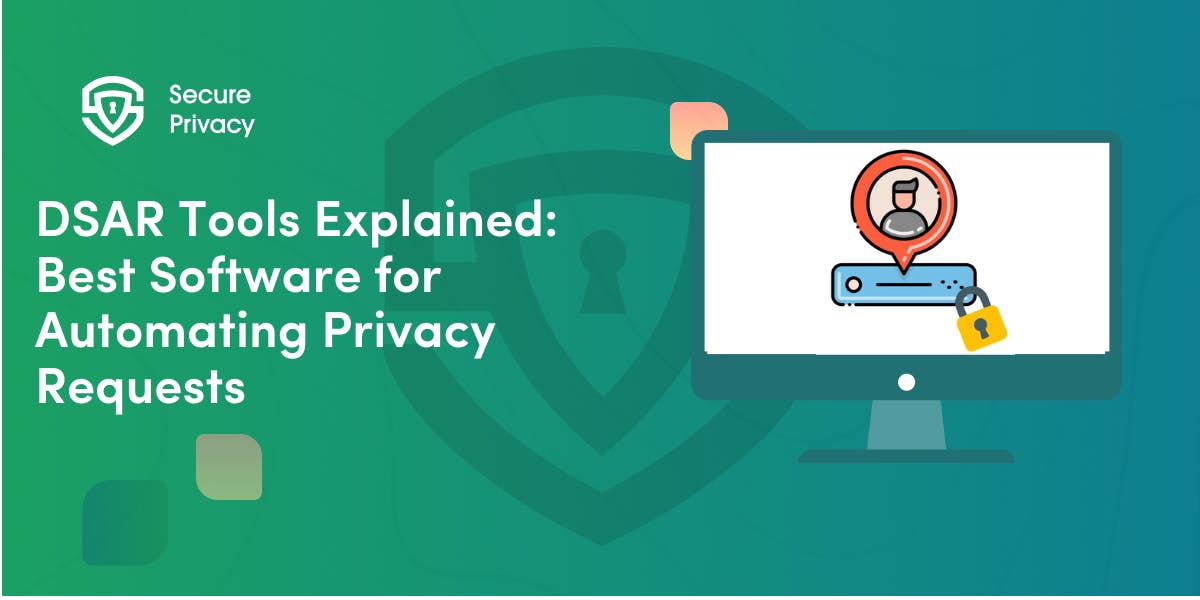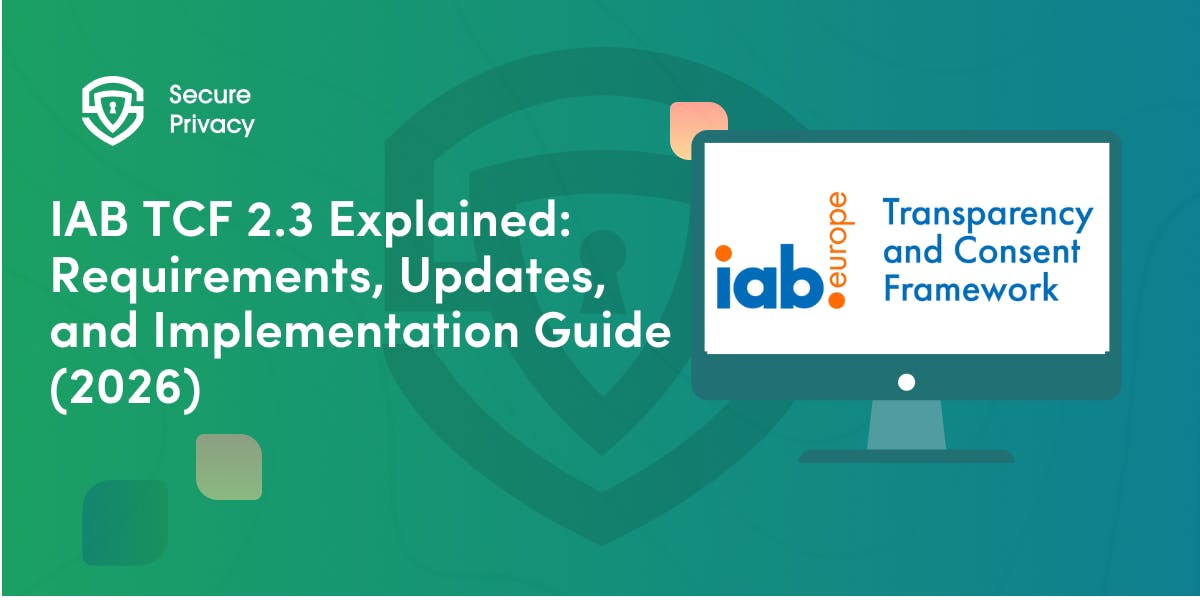Mobile App Consent Management: What You Need to Know in 2025 (Updated July 2025)
Mobile privacy enforcement has reached a tipping point. With billion-dollar fines, aggressive app store policies, and users increasingly aware of their privacy rights, mobile app consent management has evolved from optional to absolutely critical for business survival in 2025.
Recent enforcement actions demonstrate the stakes: Meta faced $1.3 billion in GDPR fines partly for mobile tracking violations, while countless apps face rejection or removal from app stores for insufficient privacy controls. User expectations have fundamentally shifted—78% now actively seek apps that demonstrate strong privacy practices.
This comprehensive guide explores everything you need to know about mobile app consent management in 2025, from regulatory requirements and technical implementation to emerging trends that will shape the future of mobile privacy and mobile app consent management best practices.
Why Mobile Consent Management Differs from Web
Screen space limitations demand innovative approaches. Traditional cookie banners designed for desktop browsers fail catastrophically on mobile interfaces. Users expect seamless experiences, not intrusive overlays that block core functionality or require excessive scrolling to understand options.
Mobile-specific data flows create unique complexity. Apps collect device identifiers, precise location data, biometric information, and sensor data unavailable to websites. Each data type may trigger different regulatory requirements and user sensitivities requiring specialized consent approaches.
Real-time SDK orchestration requires sophisticated coordination. Mobile apps integrate dozens of third-party SDKs for advertising, analytics, crash reporting, and feature functionality. Each SDK may collect data independently, requiring centralized mobile app consent management that coordinates permissions across all integrated services. For a step-by-step practical guide to implementing Google Consent Mode on mobile, see [Google Consent Mode on Mobile: A Practical Guide for Marketers and Developers].
Platform policies add additional compliance layers. Apple's App Tracking Transparency and Google's Data Safety requirements create mandatory disclosure and consent mechanisms beyond traditional privacy laws. Non-compliance results in immediate app rejection or removal from distribution channels.
Cross-platform synchronization challenges multiply. Users expect consistent privacy preferences across iOS, Android, web, and connected device interactions. Maintaining synchronized consent records across platforms while respecting platform-specific requirements demands sophisticated technical architecture for effective mobile app consent management.
Legal Landscape Shaping Mobile Privacy in 2025
GDPR and ePrivacy Directive Requirements
Explicit consent before any tracking remains the cornerstone of European mobile privacy requirements. Apps must obtain clear, informed consent before accessing device identifiers, location data, or implementing tracking mechanisms for advertising or analytics purposes.
Granular consent categories enable users to accept some data uses while rejecting others. European regulators expect apps to offer separate choices for advertising, analytics, personalization, and essential functionality rather than bundled all-or-nothing consent requests in their mobile app consent management systems.
Consent withdrawal must equal consent granting in ease and accessibility. Users need persistent access to preference centers where they can modify or revoke previous choices without app reinstallation or complex navigation paths.
CCPA and California Privacy Rights
"Do Not Sell or Share" requirements apply to mobile apps selling or sharing personal information with third parties. California residents must receive clear opt-out mechanisms for data sharing, including behavioral advertising and cross-app tracking, integrated into mobile app consent management interfaces.
Global Privacy Control (GPC) signal recognition becomes mandatory for apps serving California users. Technical implementation must automatically honor GPC signals without requiring manual user interaction or additional consent steps.
Sensitive personal information limitations require explicit user permission before collecting or using biometric data, precise geolocation, health information, or personal communications content within mobile applications.
Emerging Global Regulations
Brazil's LGPD follows GDPR-style explicit consent requirements for most personal data processing, with enhanced protections for children's data and sensitive information categories common in mobile applications requiring specialized mobile app consent management approaches.
India's Digital Personal Data Protection Act emphasizes consent-centric data protection with specific mobile application relevance, including requirements for data localization and enhanced parental consent mechanisms.
Enforcement trends target mobile-first violations as regulators recognize mobile apps as primary data collection vectors. Recent actions focus on insufficient consent mechanisms, dark patterns, and failure to honor user choices, making robust mobile app consent management essential for regulatory compliance.
App Store Policies and Platform Compliance
Apple's App Tracking Transparency Framework
Mandatory tracking permission requests appear when apps access device identifiers for cross-app or cross-website tracking. The system-level prompt cannot be customized, requiring apps to provide clear context through pre-permission education screens.
App-specific privacy nutrition labels display data collection practices prominently in App Store listings. Inaccurate disclosures result in app rejection, while privacy-focused apps gain competitive advantages through transparent practices.
Enhanced enforcement mechanisms include automated scanning for tracking behavior, manual review of privacy implementations, and post-launch audits of data collection practices compared to disclosed policies.
Google Play Data Safety and Permissions
Comprehensive data disclosure requirements mandate detailed explanations of data collection, sharing, and security practices. Apps must categorize all collected data types and specify purposes for each collection activity.
Runtime permission improvements provide users greater control over data access, with enhanced explanations of why apps need specific permissions and options to grant temporary or limited access to sensitive data.
Developer accountability measures include regular policy compliance reviews, user reporting mechanisms for privacy violations, and penalties including app removal for non-compliant behavior.
Technical Implementation Essentials for Mobile App Consent Management
Native Consent Interface Design
Context-aware permission timing presents consent requests when users encounter relevant features rather than during app launch. This "just-in-time" approach improves comprehension and consent rates while reducing user friction in mobile app consent management workflows.
Adaptive interface scaling ensures consent interfaces display properly across device sizes and orientations. Responsive design principles become critical for maintaining readability and usability across diverse mobile hardware configurations.
Accessibility compliance includes screen reader compatibility, sufficient color contrast, and alternative input methods for users with disabilities. Consent interfaces must meet platform accessibility guidelines to ensure universal access to privacy controls.
SDK Consent Orchestration
Centralized permission management coordinates consent signals across all integrated SDKs, ensuring third-party services respect user choices. This requires technical integration with advertising networks, analytics providers, and feature-specific SDKs within comprehensive mobile app consent management frameworks.
Real-time consent propagation immediately communicates user choices to all relevant services. Delayed or incomplete consent signal transmission creates compliance gaps and potential regulatory violations.
Consent logging and audit trails maintain detailed records of user choices, consent interface versions, and SDK integration status. These logs support regulatory compliance documentation and troubleshooting consent-related issues.
Cross-Platform Synchronization
Device-agnostic consent storage maintains user preferences across app reinstallations, device upgrades, and platform migrations. Cloud-based storage with local caching ensures consistent experiences while respecting offline usage patterns in modern mobile app consent management systems.
Account-based preference management links consent choices to user accounts rather than specific devices. This approach enables consistent privacy settings across multiple devices while respecting users who prefer device-specific privacy controls.
Platform-specific adaptation accommodates differences in iOS and Android consent mechanisms while maintaining consistent core functionality. Implementation strategies must respect platform conventions while ensuring regulatory compliance. Additionally, Android-specific considerations extend beyond smartphones to connected devices like Android TV and tvOS which require different consent architectures and presentation approaches.
User Experience and Trust Building
Progressive disclosure strategies introduce privacy concepts gradually rather than overwhelming users with comprehensive information upfront. Layered approaches provide essential information immediately with detailed explanations available on demand, optimizing mobile app consent management user experiences.
Visual consistency with app branding ensures consent interfaces feel integrated rather than intrusive. Custom styling options should maintain brand identity while clearly communicating the importance of privacy choices.
Cultural and linguistic localization adapts consent experiences for international audiences. This includes not only language translation but cultural adaptation of privacy concepts and consent interface design patterns.
Clear value proposition communication explains benefits users receive in exchange for data sharing permissions. Transparent explanations of how personal data enhances app functionality help users make informed decisions about privacy tradeoffs.
Common Implementation Mistakes to Avoid
Web-style banner adoption fails catastrophically in mobile environments. Desktop-oriented consent interfaces create poor user experiences and may violate platform-specific design guidelines.
Static consent implementations cannot adapt to changing regulatory requirements or SDK updates. Hardcoded permission systems require app updates for compliance changes, creating unnecessary risk and user friction that proper mobile app consent management platforms eliminate.
Incomplete audit documentation leaves organizations vulnerable during regulatory investigations. Consent management systems must maintain comprehensive logs of user interactions, interface changes, and technical configuration updates.
SDK integration gaps allow third-party services to collect data without proper consent. Incomplete integration means user choices may be recorded but not properly enforced across all data collection activities, undermining mobile app consent management effectiveness.
Platform policy ignorance results in app rejection or removal from distribution channels. Mobile app consent management must address both privacy regulations and platform-specific requirements simultaneously to ensure successful app distribution.
Choosing the Right Mobile CMP for 2025
Comprehensive SDK coverage ensures the platform integrates with major advertising networks, analytics providers, and common mobile development frameworks. Broad compatibility reduces implementation complexity and ensures complete consent coverage for robust mobile app consent management.
App Tracking Transparency integration provides seamless coordination between platform-level permissions and app-specific consent management. Native integration simplifies implementation while ensuring consistent user experiences.
Advanced customization capabilities enable consent interfaces that match app branding and user experience patterns. White-label options support agencies and enterprises requiring branded consent experiences for multiple applications.
Global compliance support addresses multiple regulatory frameworks simultaneously, adapting consent flows based on user location and applicable privacy laws. Automated compliance updates reduce ongoing maintenance requirements for scalable mobile app consent management.
Robust analytics and reporting provide insights into consent rates, user behavior patterns, and compliance metrics. Data-driven optimization capabilities help improve both user experience and business outcomes through consent management.
API-first architecture enables deep integration with existing mobile development workflows and backend systems. Comprehensive APIs support custom implementations while maintaining platform benefits.
Secure Privacy's Mobile Innovation
Secure Privacy delivers cutting-edge mobile app consent management through native iOS and Android SDKs designed specifically for 2025's regulatory landscape. The platform combines comprehensive compliance coverage with optimized user experiences across all mobile platforms.
Advanced mobile SDK architecture provides lightweight integration with minimal impact on app performance or battery life. Native implementations ensure optimal user experiences while maintaining comprehensive consent functionality.
Intelligent consent optimization uses machine learning to improve consent rates through personalized interface adaptation and timing optimization. A/B testing capabilities enable data-driven improvement of consent experiences.
Complete DSAR automation now includes specialized forms for mobile applications, streamlining data subject access request processing across mobile and web properties. This innovation addresses the growing complexity of mobile data subject rights management.
Cross-platform synchronization maintains consistent user preferences across iOS, Android, web, and connected device interactions. Unified user profiles respect privacy choices regardless of interaction channel.
Real-time compliance monitoring alerts development teams to potential issues before they impact users or regulatory compliance. Automated monitoring reduces ongoing maintenance while ensuring continued protection.
Future Trends in Mobile Consent Management
Adaptive consent interfaces will use artificial intelligence to personalize privacy explanations based on user behavior patterns and comprehension levels. Machine learning will optimize consent timing and presentation for individual users while maintaining regulatory compliance in future mobile app consent management systems.
Privacy sandbox integration for Android applications will transform mobile advertising and analytics while requiring sophisticated consent management for new privacy-preserving technologies. Early adoption will provide competitive advantages as these technologies mature.
Cross-device consent portability will enable seamless privacy preference synchronization across smartphones, tablets, connected cars, smart home devices, and emerging platforms. Standardized consent protocols will simplify implementation while improving user experiences.
Biometric consent authentication may emerge for high-value consent decisions, providing stronger verification of user intent while addressing concerns about consent manipulation or unauthorized access to privacy settings.
Regulatory convergence toward consistent global privacy standards will simplify compliance implementation while potentially raising baseline requirements for consent management across all mobile applications.
FAQ: Mobile App Consent Management
How does mobile consent differ from website cookie consent?
Mobile consent addresses device-specific data like location, identifiers, and sensor information unavailable to websites. Implementation must consider platform policies, screen constraints, and SDK integration complexity beyond traditional web cookie management.
What happens if my app doesn't comply with ATT requirements?
Apple may reject app updates or remove existing apps from the App Store for ATT violations. Google Play applies similar enforcement for Data Safety policy violations, making platform compliance essential for distribution.
Can I use the same consent management across iOS and Android?
Yes, but implementation must adapt to platform-specific requirements. Cross-platform CMPs handle these differences automatically while maintaining consistent core functionality and regulatory compliance.
How do I handle consent for apps targeting children?
Children's apps face enhanced requirements including parental consent mechanisms, stricter data minimization, and simplified privacy explanations. Age-appropriate consent interfaces require specialized design and implementation approaches.
What's the relationship between GDPR consent and ATT permissions?
These are separate but related requirements. GDPR consent addresses personal data processing generally, while ATT specifically covers cross-app tracking. Both may apply to the same app functionality.
How often should I update my mobile consent interfaces?
Monitor regulatory changes, platform policy updates, and user feedback continuously. Major updates may require immediate implementation, while minor improvements can follow regular app update cycles.
Get Started For Free with the
#1 Cookie Consent Platform.
No credit card required

What is Cookie Consent? A Quick 2026-Ready Glance
Your website loads. Cookies track users. But without proper cookie consent, you're violating GDPR — risking fines up to €20 million or 4% of global revenue. Cookie consent is the legally required mechanism by which websites obtain explicit user approval before deploying non-essential tracking technologies. This requirement stems from GDPR Article 4(11) and the ePrivacy Directive, mandating that consent must be freely given, specific, informed, and unambiguous.
- Legal & News

DSAR Tools Explained: Best Software for Automating Privacy Requests
You're drowning in data subject access requests. Manual searches through dozens of systems miss regulatory deadlines and expose organizations to fines starting at $2,500 per violation. The solution? DSAR tools — purpose-built software that automates the entire process of responding to data subject access requests, from intake to delivery.
- Legal & News

IAB TCF 2.3 Explained: Requirements, Updates, and Implementation Guide (2026)
Your ad revenue dropped 40% overnight. Google stopped bidding on your inventory. Your DSP partners flagged your traffic as non-compliant. The culprit? An outdated TCF 2.2 consent string after the February 2026 enforcement deadline.
- Legal & News
- Cookie Consent

